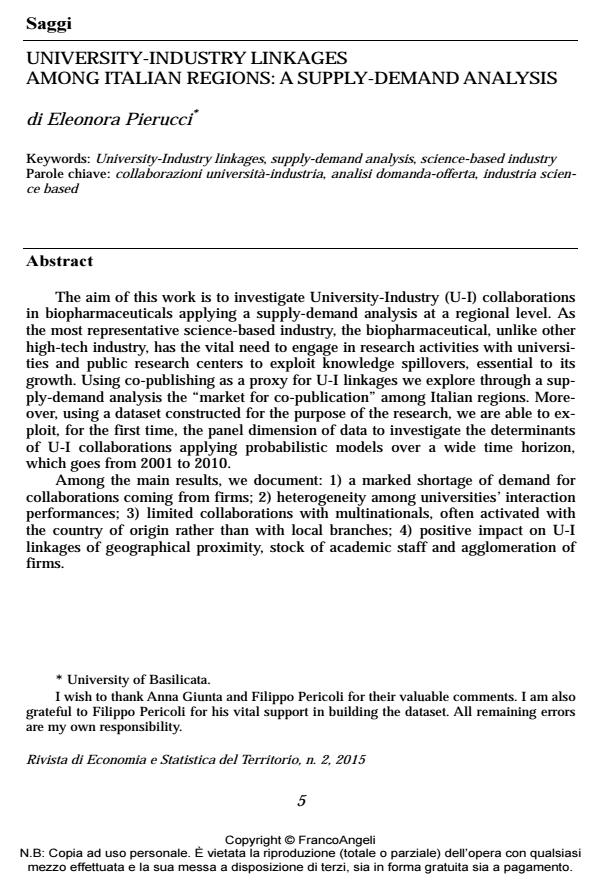University-industry linkages. Among italian regions: a supply-demand analysis
Journal title RIVISTA DI ECONOMIA E STATISTICA DEL TERRITORIO
Author/s Eleonora Pierucci
Publishing Year 2015 Issue 2015/2
Language English Pages 29 P. 5-33 File size 232 KB
DOI 10.3280/REST2015-002001
DOI is like a bar code for intellectual property: to have more infomation
click here
Below, you can see the article first page
If you want to buy this article in PDF format, you can do it, following the instructions to buy download credits

FrancoAngeli is member of Publishers International Linking Association, Inc (PILA), a not-for-profit association which run the CrossRef service enabling links to and from online scholarly content.
The aim of this work is to investigate University-Industry (U-I) collaborations in biopharmaceuticals applying a supply-demand analysis at a regional level. As the most representative science-based industry, the biopharmaceutical, unlike other high-tech industry, has the vital need to engage in research activities with universities and public research centers to exploit knowledge spillovers, essential to its growth. Using co-publishing as a proxy for U-I linkages we explore through a supply- demand analysis the "market for co-publication" among Italian regions. Moreover, using a dataset constructed for the purpose of the research, we are able to exploit, for the first time, the panel dimension of data to investigate the determinants of U-I collaborations applying probabilistic models over a wide time horizon, which goes from 2001 to 2010. Among the main results, we document: 1) a marked shortage of demand for collaborations coming from firms; 2) heterogeneity among universities’ interaction performances; 3) limited collaborations with multinationals, often activated with the country of origin rather than with local branches; 4) positive impact on U-I linkages of geographical proximity, stock of academic staff and agglomeration of firms
Jel codes: O310, O320, O330, R100
Eleonora Pierucci, University-industry linkages. Among italian regions: a supply-demand analysis in "RIVISTA DI ECONOMIA E STATISTICA DEL TERRITORIO" 2/2015, pp 5-33, DOI: 10.3280/REST2015-002001